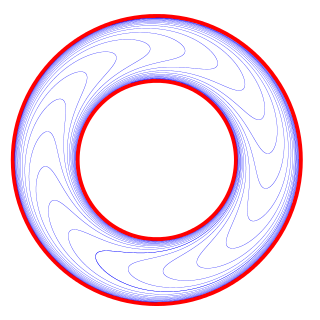Definition
If β is a path in B that starts at, say, b, then we have the homotopy  where the first map is a projection. Since p is a fibration, by the homotopy lifting property, h lifts to a homotopy
where the first map is a projection. Since p is a fibration, by the homotopy lifting property, h lifts to a homotopy  with
with  . We have:
. We have:
In mathematics, in particular in homotopy theory within algebraic topology, the homotopy lifting property is a technical condition on a continuous function from a topological space E to another one, B. It is designed to support the picture of E "above" B by allowing a homotopy taking place in B to be moved "upstairs" to E.
 .
.
(There might be an ambiguity and so  need not be well-defined.)
need not be well-defined.)
Let  denote the set of path classes in B. We claim that the construction determines the map:
denote the set of path classes in B. We claim that the construction determines the map:
 the set of homotopy classes of maps.
the set of homotopy classes of maps.
Suppose β, β' are in the same path class; thus, there is a homotopy h from β to β'. Let
 .
.
Drawing a picture, there is a homeomorphism  that restricts to a homeomorphism
that restricts to a homeomorphism  . Let
. Let  be such that
be such that  ,
,  and
and  .
.
Then, by the homotopy lifting property, we can lift the homotopy  to w such that w restricts to
to w such that w restricts to  . In particular, we have
. In particular, we have  , establishing the claim.
, establishing the claim.
It is clear from the construction that the map is a homomorphism: if  ,
,

where  is the constant path at b. It follows that
is the constant path at b. It follows that  has inverse. Hence, we can actually say:
has inverse. Hence, we can actually say:
 the set of homotopy classes of homotopy equivalences.
the set of homotopy classes of homotopy equivalences.
Also, we have: for each b in B,
 { [ƒ] | homotopy equivalence
{ [ƒ] | homotopy equivalence  }
}
which is a group homomorphism (the right-hand side is clearly a group.) In other words, the fundamental group of B at b acts on the fiber over b, up to homotopy. This fact is a useful substitute for the absence of the structure group.



























